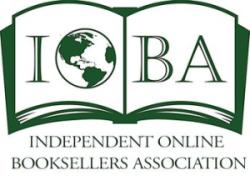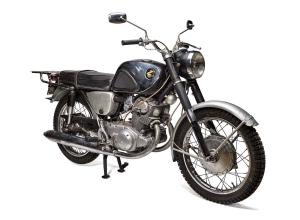July 2015 |
Two Bay Psalm Books on Exhibit at the Library of Congress
Sightseers in Washington, D.C., have endless opportunities to be awestruck. This summer, the Library of Congress provides yet another option with its excellent new exhibit, First Among Many: The Bay Psalm Book and Early Moments in American Printing.
 The first thing visitors behold upon entering the exhibit space is a case containing two copies of the Bay Psalm Book (1640), the first book printed in colonial America, of which only eleven survive. On the left sits the Library of Congress copy--worn and incomplete, but in its original binding. On the right (pictured above) is David M. Rubenstein's copy--rebound, but complete, even with the original title page. Rubenstein purchased the book at auction in November 2013 for $14.2 million, the current auction record for any printed book. It is a remarkable pairing, and any bibliophile might be pleased to make the trip for it alone.
The first thing visitors behold upon entering the exhibit space is a case containing two copies of the Bay Psalm Book (1640), the first book printed in colonial America, of which only eleven survive. On the left sits the Library of Congress copy--worn and incomplete, but in its original binding. On the right (pictured above) is David M. Rubenstein's copy--rebound, but complete, even with the original title page. Rubenstein purchased the book at auction in November 2013 for $14.2 million, the current auction record for any printed book. It is a remarkable pairing, and any bibliophile might be pleased to make the trip for it alone.
And yet, there is more to ogle. From the Bay Psalm Book, the exhibit encourages viewers toward the Eliot Indian Bible, the first complete bible printed in the Western Hemisphere, in 1660-1663. Printing spread slowly in the colonies, and it remained less expensive to import English books well into the eighteenth century. But it took off during the pre-Revolutionary period, and the work of New York newspaperman Peter Zenger and of printer-patriot Benjamin Franklin stands to represent these heady days. Franklin, of course, has an entire case devoted to his output, from his apprenticeship to his older brother, James Franklin, to his almanacs, to his "masterwork," Cicero's Discourse of Old-age (1744).
"The Revolution in American thought, captured in print, was underway; and the rebellion was soon to follow," wrote Thomas Paine. An "extremely rare broadside printing" (1777) of his American Crisis hangs in the exhibit, as does a Dunlap broadside of the Declaration of Independence (July 1776) and John Hancock's "Plea for Support," printed in December 1776 by Mary Katherine Goddard. Another highlight in this section is Isaiah Thomas' Royal American Magazine from July 1774, opened to showcase Paul Revere's engravings.
The Federalist, a mainstay on any list of important early American books, is illustrated in this exhibit by a copy of the 1788 compendium once owned by Alexander Hamilton's wife, whose sister gifted it to Thomas Jefferson. The annotations he left indicate his best guesses for authorship of many of the anonymously published essays.
Other "firsts" of note include the first novel published in America, William Hill Brown's The Power of Sympathy, or, The Triumph of Nature, Founded in Truth (1789), and the first volume of poetry by an African American published in America, Phillis Wheatley's Poems on Various Subjects, Religious and Moral (1787).
Tight in scope, well organized, and chock-full of incredible historical high spots, First Among Many situates itself perfectly within the city's tourism complex. "Lay" museumgoers will enjoy it; book lovers will adore it. The exhibit is up through January 2, 2016. If you can't make it to D.C., check out the online version.
Image: Credit Brett Barry. Used by permission.
 The first thing visitors behold upon entering the exhibit space is a case containing two copies of the Bay Psalm Book (1640), the first book printed in colonial America, of which only eleven survive. On the left sits the Library of Congress copy--worn and incomplete, but in its original binding. On the right (pictured above) is David M. Rubenstein's copy--rebound, but complete, even with the original title page. Rubenstein purchased the book at auction in November 2013 for $14.2 million, the current auction record for any printed book. It is a remarkable pairing, and any bibliophile might be pleased to make the trip for it alone.
The first thing visitors behold upon entering the exhibit space is a case containing two copies of the Bay Psalm Book (1640), the first book printed in colonial America, of which only eleven survive. On the left sits the Library of Congress copy--worn and incomplete, but in its original binding. On the right (pictured above) is David M. Rubenstein's copy--rebound, but complete, even with the original title page. Rubenstein purchased the book at auction in November 2013 for $14.2 million, the current auction record for any printed book. It is a remarkable pairing, and any bibliophile might be pleased to make the trip for it alone. And yet, there is more to ogle. From the Bay Psalm Book, the exhibit encourages viewers toward the Eliot Indian Bible, the first complete bible printed in the Western Hemisphere, in 1660-1663. Printing spread slowly in the colonies, and it remained less expensive to import English books well into the eighteenth century. But it took off during the pre-Revolutionary period, and the work of New York newspaperman Peter Zenger and of printer-patriot Benjamin Franklin stands to represent these heady days. Franklin, of course, has an entire case devoted to his output, from his apprenticeship to his older brother, James Franklin, to his almanacs, to his "masterwork," Cicero's Discourse of Old-age (1744).
"The Revolution in American thought, captured in print, was underway; and the rebellion was soon to follow," wrote Thomas Paine. An "extremely rare broadside printing" (1777) of his American Crisis hangs in the exhibit, as does a Dunlap broadside of the Declaration of Independence (July 1776) and John Hancock's "Plea for Support," printed in December 1776 by Mary Katherine Goddard. Another highlight in this section is Isaiah Thomas' Royal American Magazine from July 1774, opened to showcase Paul Revere's engravings.
The Federalist, a mainstay on any list of important early American books, is illustrated in this exhibit by a copy of the 1788 compendium once owned by Alexander Hamilton's wife, whose sister gifted it to Thomas Jefferson. The annotations he left indicate his best guesses for authorship of many of the anonymously published essays.
Other "firsts" of note include the first novel published in America, William Hill Brown's The Power of Sympathy, or, The Triumph of Nature, Founded in Truth (1789), and the first volume of poetry by an African American published in America, Phillis Wheatley's Poems on Various Subjects, Religious and Moral (1787).
Tight in scope, well organized, and chock-full of incredible historical high spots, First Among Many situates itself perfectly within the city's tourism complex. "Lay" museumgoers will enjoy it; book lovers will adore it. The exhibit is up through January 2, 2016. If you can't make it to D.C., check out the online version.
Image: Credit Brett Barry. Used by permission.
















